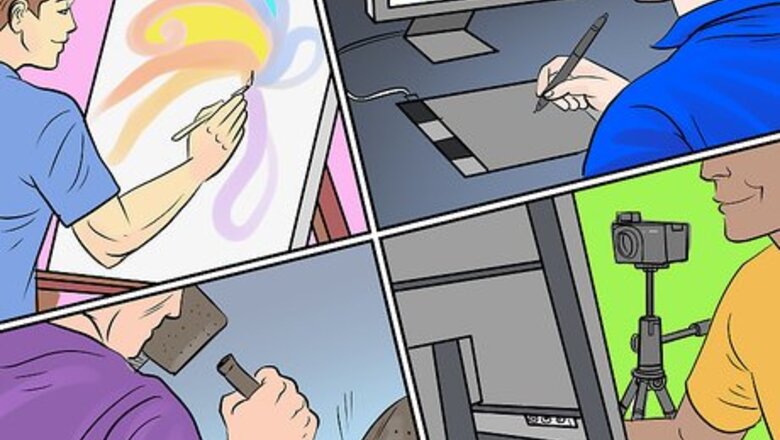
views
Improving Technical Skills
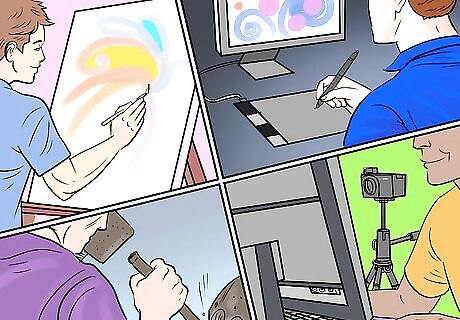
Break down your chosen art form into the essential components or skills. Saying, "I want to be a masterful painter," is a noble goal, but it is so broad it is hard to know where to start. Successful practice in any art form requires mastery of the smaller skills, almost all of which can be practiced independently of each other: Painters must master drawing and sketching, color blending, shading, brush techniques, and composition. Drawers and Illustrators need to draw, shade, color, and compose, and may want to learn the basics of digital illustration and animation. Sculptors: Often learn a wide variety of techniques and materials, from ceramic to metalworking, and must be able to sketch and draft ideas on paper. Advanced study in your material and tools of choice, including more scientific research, is highly recommended. Video Artists: Need to be fluent across the set, from lighting, audio, camera operation, and editing. Skill drawing (for storyboards) and animating are a big plus.
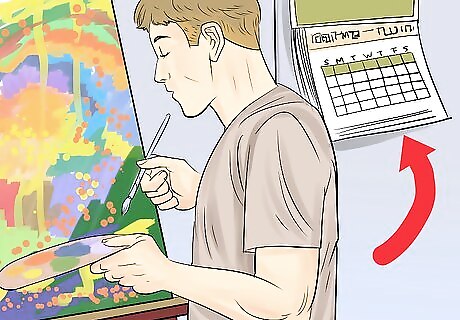
Practice your art every single day, making it a daily habit. Humans improve much faster through daily effort, and even 10 minutes a day can be better than 2 hours once a week. Find a way to make art part of your everyday routine, prioritizing it highly on your schedule. If you can't find time to make art every day, being a good artist will be exponentially harder. Give yourself a cue each day to make things easier -- first thing in the morning, after dinner, before you exercise, etc. Coupling habits together makes them much easier to stick to. Reward yourself slightly after each session -- maybe you don't eat dessert until done, or go for a run once the page is finished. Tie a good feeling to your daily art practice. Missing days is okay -- it happens. Instead of beating yourself up or punishing yourself with more work the next day, just get back on track. Art should be fun, not punishment!
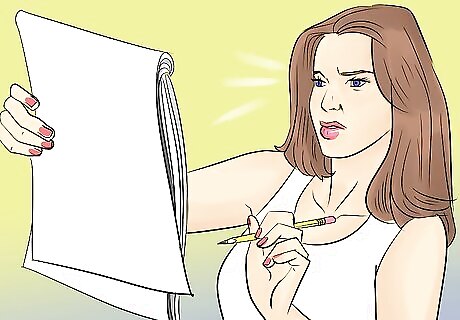
Take an honest appraisal of your artistic weakness, to practice with mindfulness. Not all practice sessions are equally beneficial. Every artist has areas and skills that they aren't very good at, and the best artists run to these areas in practice. Remember, this isn't always about making a publishable piece. Once you give yourself the freedom to practice things you're bad at, you'll notice yourself making much faster improvements in all areas of your art. Mindful practice is about finding mistakes and fixing them in order to improve. If you don't let yourself make mistakes, how could you ever improve. There is a difference between "practice" and "performance." Once you realize that your sketchbooks and studies are there to help you get better, not to share with others, you can use them practice making your next "real" piece of art even better.

Take on smaller projects, or "studies" to help you ramp up to your big projects. A study is simply a test run of some aspect of your piece. For example, a sculptor doing a full length human body likely wouldn't launch into the replica without knowing her materials, style, and logistical concerns beforehand. To prepare, she might start studies in the following areas. Note that, though sculpture is the example, all good artists test before beginning: Difficult or unusual sections: Hands are complex organs with many moving joints and bones. Practicing a few hands and figuring out how they will be held, is best done before adding them to the final sculpture Logistic/Technical concerns: How is the sculpture going to stand up without falling? What base is being used, and how is the sculpture attached? Stylistic Elements: If it is a melancholic or sad sculpture, how do you plan to capture that sadness? Smaller sculptures and sketching facial expressions will help figure it out. You could also try to replicate similar pieces or emotions.
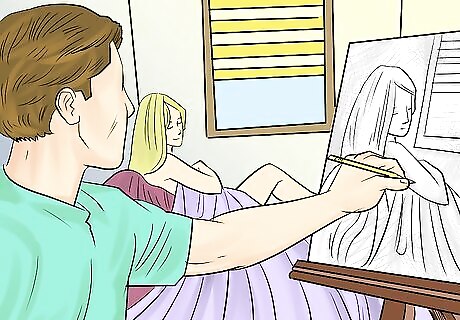
When in doubt, practice realism, even if it isn't your artistic form of choice. Say you love to make impressionist, brightly-colored portraits in the style of Vincent Van Gogh, or abstract, cubist paintings like Picasso. While neither of them look like anything you could ever see in real life, both men are masters of realistic portraiture. You need to know the rules before you can break them, and the ability to perfectly replicate what you see in front of you is the best technical exercise you can perform. Try out: Sketching or drawing still landscapes Capturing the human body realistically, both still and in motion. Replicating your favorite paintings or works of art, teaching yourself the techniques of the masters.
Developing a Unique Style
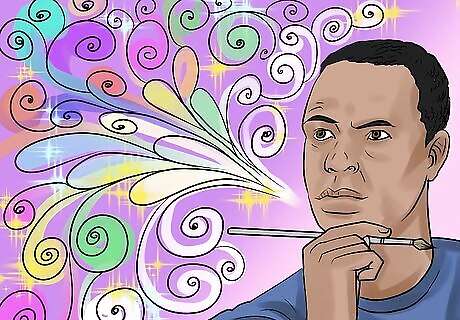
Trust your gut when choosing projects. If an idea captures your and won't let go you've got to pursue it. Great artists don't worry if it will sell, if it fits current artistic trends, or will take a long time to make. Great artists jump into their passions with open arms, trusting themselves to make it work. If you want a unique, refreshing artistic voice, then you need to trust your voice. It can be hard to embark on a project that feels weird, new, and experimental. But remember -- if you can't get passionate about the project, how can you expect your audience to feel passionately about it?
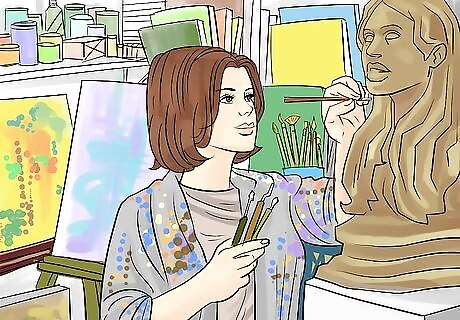
Experiment in a wide variety of styles and disciplines. There is a reason burgeoning painters spend time sculpting, and vice versa. All forms of art are intrinsically linked, and they share similar vocabulary and skills (color, shading, composition, etc.). By pushing yourself to approach art differently, you open yourself up to a wealth of new influences, techniques, and styles. Push yourself to get out of your comfort zone -- this is often where you make the biggest breakthroughs and personal discoveries. This includes other forms of art, such as writing and music. Creative expression, whether with a paintbrush or a piccolo, is about getting your ideas out of your head and into the audiences. The medium you use to do that doesn't matter.

Draw influence from your entire life, not just your artistic pursuits. Great artists are often great readers, using books and literature to push themselves to new ideas and philosophies. They are unashamed of their past, no matter what it is, and are confident using it for motivation and inspiration. Furthermore, great artists rarely say "no." They keep their minds open to everything, becoming a sponge of influences that come together to make something incredibly unique, and incredibly you.
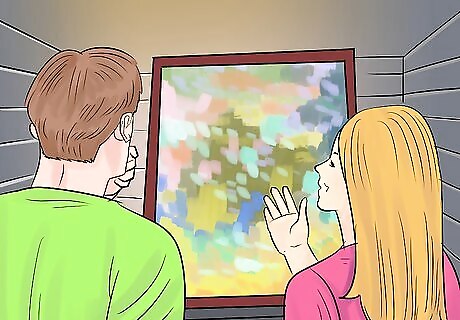
Show your work to others for thoughts and feedback. For most artists, art is a form of communication. You create art because you want to share it with other people. Otherwise, you could just leave the ideas in your head. Exactly how you want to show your work and to who is your choice. You could try to get your work shown in galleries and put up for sale. You could try getting published. You might be more comfortable putting your work online and possibly selling prints of it. Or maybe you would rather just frame some of your best work and hang it up in your home for your family and friends to enjoy. Ask for honest critiques, and try to accept them with grace. You will never catch everything, and your audience's opinion will help find areas to improve in. Ask people what they think about the art, and what it might mean. Does it match up with your own thoughts and ideas? Did you accomplish your goals with the piece? Could you better communicate them your goals, or are you happy with ambiguity and differing opinions?

Accept constructive criticism. Constructive criticism is designed to help you improve your artwork, either the piece you're working on now or your future works. A person giving constructive criticism will usually point out both the flaws and the strengths in your piece and make suggestions on how you could fix the flaws. While it isn't always fun to hear, criticism is something you're going to have to deal with as an artist. Learn to identify when a criticism of your work is valid and use that information to focus on correcting your mistakes.
Becoming a Professional Artist

Put together an online portfolio to showcase your work and talent. Every artist needs a portfolio -- the place where potential buyers or clients can see your work. Luckily, the internet is making it easy as website design spaces like Wix.com, SquareSpace, and Wordpress all have templates designed for artists portfolios. All you have to do is customize the name, color, and bio, then import images or videos of your art. Purchase a custom domain name if you are looking for professional clients. A site like www.MyPortfolio.wordpress.com looks much less professional than www.MyPortfolio.com. When done, attach this portfolio to all your social media accounts to make it easy to find. Consider printing (or drawing/designing, for memorable flair) some business cards to get the word around.
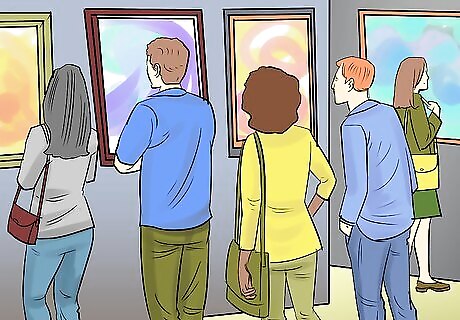
Host shows to get your work out there. Contact small galleries near you to see if you can put some work up. Look into that restaurant or coffee shop that puts work on the walls. And, if all else fails, throw your own art show. All you need is a space to hang everything, some refreshments, and friends willing to come and support you. Try to host shows with multiple artists when possible. That way, everyone brings their own friend groups so each artist can meet new fans. You never know if you can display your work unless you ask. Don't be intimidated -- they absolute worst thing that happens is the word, "no." Consider hosting "open studio" session once a month, where friends and curious spectators can watch you work and talk about your process.
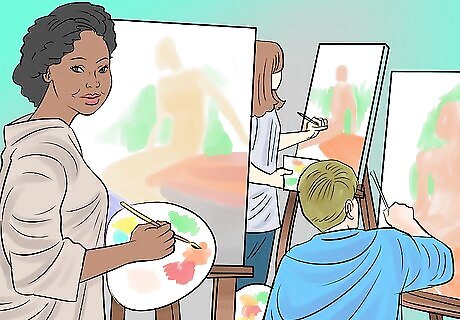
Take classes to grow skill and make contacts. Few, if any, artists are so skilled that they can't benefit from some kind of formal instruction. Art classes can help you get past problems with your work that you haven't been able to solve on your own, identify areas in which you could improve, or just give you some direction and a regular time to devote to working on art. There are courses available for all skill levels at colleges, community centers, local arts centers, and numerous other places. Your teacher and fellow students are essential contacts as you build your career. They can point to new opportunities, team up with you for shows, and support your work in the difficult early years when you're still unknown. Never discount a connection or friend. In the word-of-mouth driven art scene, a wide, strong social network is king.

Devote time every day to self-promotion and social media. It isn't always a ton of fun, but it is absolutely essential if you intend to be a professional. No one wants to champion your art but you. And, in its own way, this is a good thing-- you no longer have to hope the "right" person shows up in your gallery. Instead, hard work online can get your work into many corners of the internet, and even make some money. If you make smaller, sellable art pieces, consider a shop on Etsy or eBay. Instagram, Tumblr, and Pinterest, with their large pictures and big art networks, are great places to share and see work. Pick 1-2 social media accounts to run and stick with those. Trying to work on Facebook, Twitter, Instagram, Pinterest, etc. all at once is impossible to do well without spending all day on the internet.
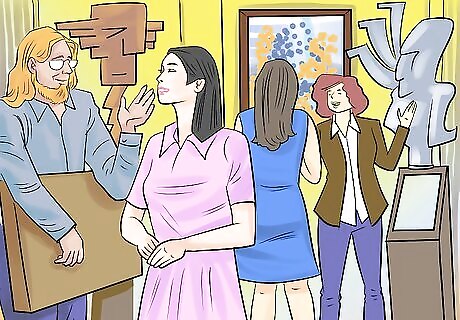
Get involved in your local art scene. Artists need to stick together, and many of the greats have come from collectives and groups. It is no mistake that many famous artists knew each other before striking it big, and some of the greatest moments in art (Paris in the 40s, NY in the 80s) come from shared creative communities. So go to local shows, enroll in classes, and collaborate with other artists. A rising tide carries all boats, so get out there and make some waves! If you're struggling to find a community, look online. There are tons of forums, sites, and communities (like the famous DeviantArt) that allow you to showcase work. Pay attention to your contemporaries, supporting their own shows and work. When you are first starting out, your best network will be artists in the same situation.
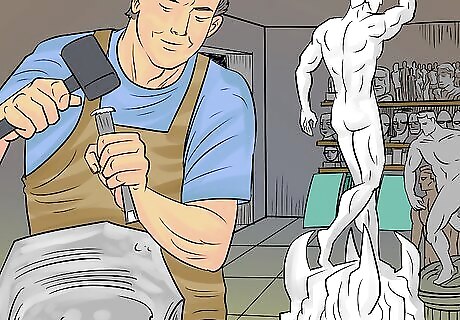
Provide yourself a lifestyle that allows you to make daily art. If you don't make art a daily priority, then it's going to be really hard to be a good artist. That is just the reality of practice-- all the talent in the world doesn't help if you don't sit down and make art. Honestly, this may require some sacrifices in terms of work hours, salary, and living situation. But if you want to be a professional artist, none of this should matter. You get to make art every single day! Always remember, especially in the early years of practice, that all of your favorite artists went through the same process.




















Comments
0 comment